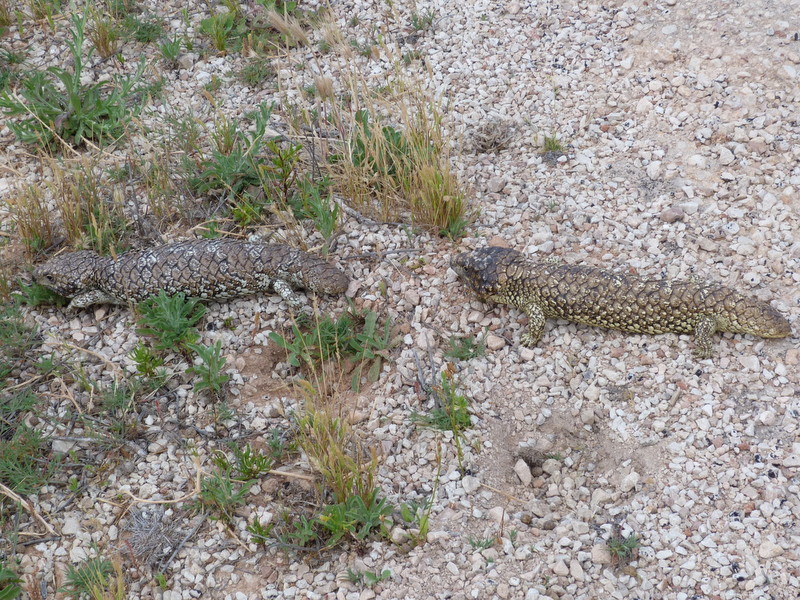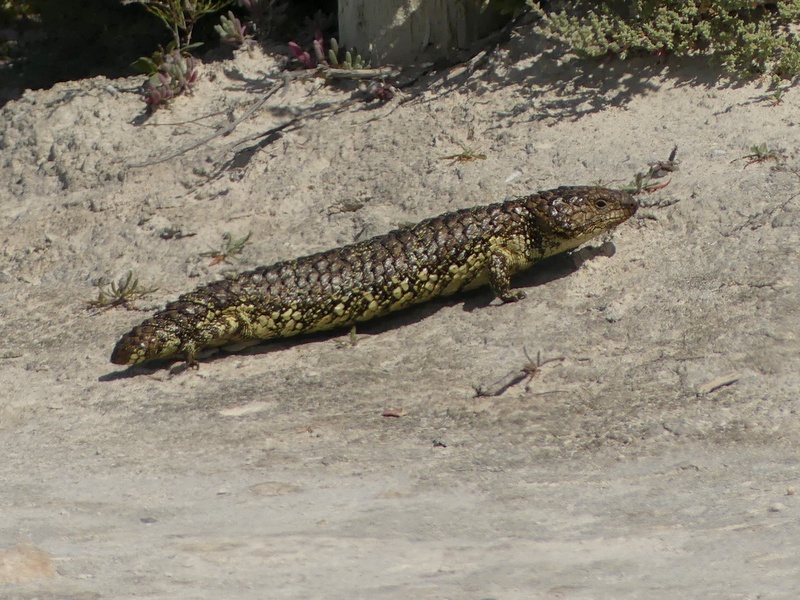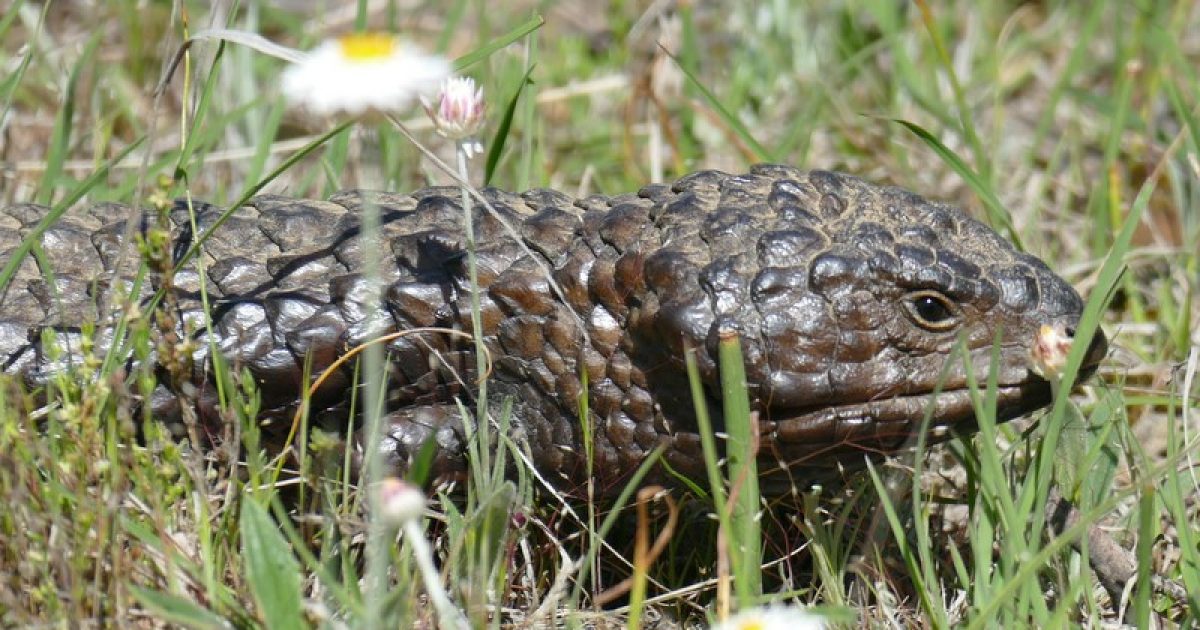A shingleback among the daisies, Mulligans Flat NR. The big, almost black scales of local shinglebacks and powerful jaw muscles behind the eyes are obvious here. Photo: Ian Fraser.
I grew up in South Australia calling them sleepy lizards (I still do in private) but they’re widely known in the east as shinglebacks.
Although they’re found right across most of southern Australia they only just come into the southern highlands where the ACT lies. It’s mostly too cold for them around here, but they are reasonably common across the north of the ACT, in Mulligans Flat, Goorooyaroo and Mount Majura.
I have an especial fondness for this strange big skink. My earliest memories are of following them around the paddocks out the back of our rented farmhouse north of Adelaide, with Peter the faithful bull terrier to guard me. (My small-boy memories tell me that we walked for miles, but I’m sure we were never out of Mum’s sight.) Later I kept a couple as pets in the big lizard enclosure that Dad built in the backyard in Adelaide – this was before there was protective legislation requiring a licence to do so.
They are covered in large overlapping scales and have a short thick tail. Some of the other names they’ve attracted across the continent reflect this, including bobtail, stumpy-tail, two-headed and pinecone lizard. They’re a common sight on inland roads, and I’ve removed many dozens of them from danger over the years.

Shingleback pair, the male following the bigger female. These have the paler scales typical of most of their range. Photo: Ian Fraser.
They’re fascinatingly ‘different’ from most other lizards too, perhaps especially in the way they determinedly seek out the same mate year after year. They don’t spend winter together – in the cold Canberra months they seek shelter alone, with basic body functions just ticking over, in or under hollow logs or in rabbit burrows. In spring however they go searching until they reunite with ‘The One’. In the process they will encounter other shinglebacks, but a brief inspection will tell them this isn’t who they’re looking for, and they’ll keep going until they meet up with their life partner again.
They’ll stay close together for the next six to eight weeks, him following her around, then they finally mate and go their separate ways, until next spring. If they can avoid accidents and predators they can live for decades, so this monogamous commitment is a serious one indeed. The female usually carries just two babies, sometimes three – another very unusual trait in reptiles – until they each reach half her length and together a quarter of her weight. They are each wrapped in a very mammal-like placenta to nurture them, so that when they are born they are relatively enormous and well-equipped to forage for themselves and go their own way.
They have a broad diet, ranging from flowers (they like yellow ones in particular) and fruit (they do love strawberries!), and insects and snails. They have powerful jaws and a row of small strong teeth around each jaw, enabling them to easily crush hard snail shells and beetle carapaces. (If handled carelessly and they become scared they can leave a bruise and possibly even break the skin, but if treated with respect they’re no danger to anyone.)

A shingleback from South Australia, with glossy new skin and the pale patterning typical of the hotter country where they are mostly found. Photo: Ian Fraser.
Like other reptiles they shed their skin as they grow, which they do throughout their lives; it doesn’t grow with them, so it regularly dries and splits and is discarded, more or less complete, leaving a new bigger shiny skin underneath. Throughout most of their range across arid southern Australia shinglebacks are blotchy brown and yellow, which probably has a camouflage advantage, but here in the cold extremities of their range they must be able to absorb as much warmth as they can from the weaker spring and autumn sun. As a result, most local shinglebacks are black or very dark brown and after shedding their skin they are beautifully glossy.
Shinglebacks are amiable lizards, engrossed in their own lives, but if harassed they will suddenly whip their body into a curve and poke out their large blue-black tongue, gaping open their bright pink mouth. If they continue to feel threatened they may even hiss and flatten their body to look bigger, but it’s all bluff. They have no real defences against predators such as cats, dogs and foxes, though the rough scales may help a bit.
I hope you can share some of my affection for shinglebacks; they really are very engaging characters.






